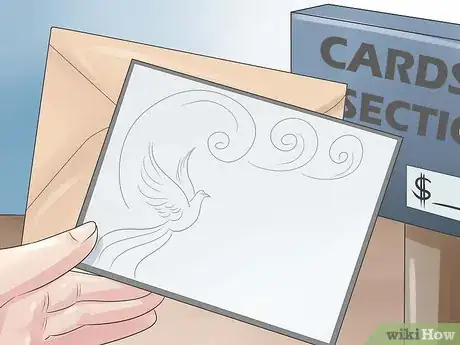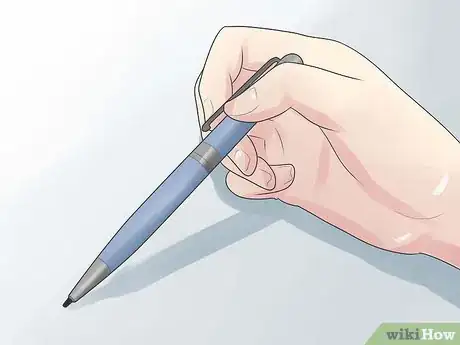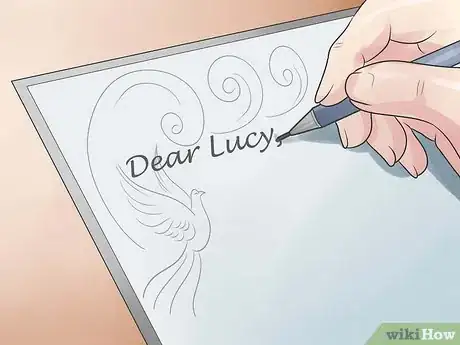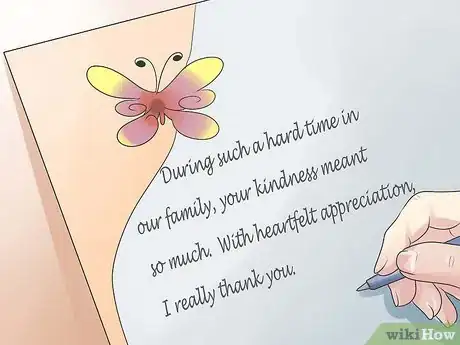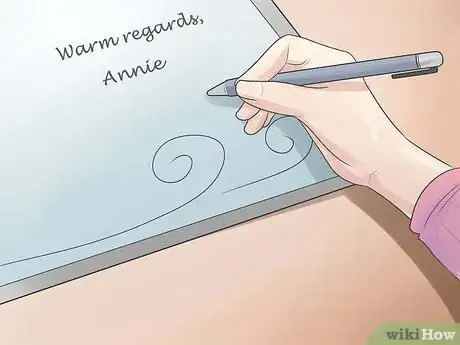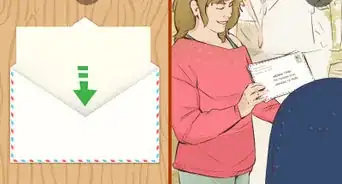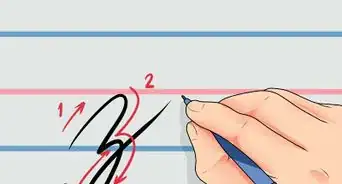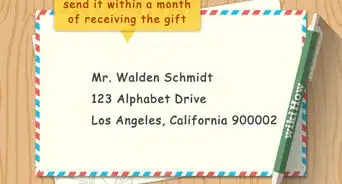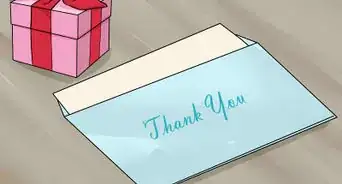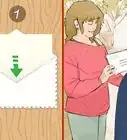This article was co-authored by Tami Claytor. Tami Claytor is an Etiquette Coach, Image Consultant, and the Owner of Always Appropriate Image and Etiquette Consulting in New York, New York. With over 20 years of experience, Tami specializes in teaching etiquette classes to individuals, students, companies, and community organizations. Tami has spent decades studying cultures through her extensive travels across five continents and has created cultural diversity workshops to promote social justice and cross-cultural awareness. She holds a BA in Economics with a concentration in International Relations from Clark University. Tami studied at the Ophelia DeVore School of Charm and the Fashion Institute of Technology, where she earned her Image Consultant Certification.
This article has been viewed 436,184 times.
Finding the words to express gratitude during a trying time, especially bereavement, can be very difficult. To write a sympathy thank-you card, follow these guidelines.
Steps
Sample Thank You Notes
Write Your Own Thank You
-
1Buy cards with envelopes. The colors and design should generally be subdued. Since you are writing a personalized note, choose a blank card or one with very little text; an abundance of trite ready-made phrases will depersonalize your gesture of thanks.
- Alternatively, you can send a plain note. This is especially appropriate if you feel you have a lot to say. However, if you're at a loss for words, stick with a store-bought card, as they don't lend themselves to a lot of writing.
- While muted cards are "normal" and socially acceptable, consider using blank cards that reflect the personality of the person whose life is being remembered. For example, tasteful images of a motorbike for someone who loved riding.
- Do not email a sympathy thank-you. Though this is the most convenient way to contact people, it is also extremely impersonal and will be considered a serious faux pas.
-
2Write with pen. Whether you've chosen a card or a letter, hand-write the note in pen rather than typing it or writing in pencil. Again, this will give the thank-you a more intimate and polished feel.Advertisement
-
3Address the recipient(s) by name. Opening with “Dear ___” breaks the ice and keeps the message intimate.
- There is no need to add their title. For example, you should write Dear Dr. Brown instead of dear Brown MD.
-
4Thank the recipient(s) for something specific. This can be an actual item (flowers, a card), a gesture of condolence (attending a funeral, making a heartfelt phone call), or simply emotional support. Mentioning specifics demonstrates that you noticed and appreciated the effort made.
-
5If possible, express something positive about the recipient(s). If someone has passed, for example, you might mention how much the recipient(s) meant to the deceased. If the recipient(s) attended an event, you might mention how much their being there gave you strength.
- If you can't think of something nice to say about the recipient(s), compliment the present/gesture instead. For example, say that gift comforted you at a dark time, that the flowers were the deceased's favorite, etc.
-
6Make your gratitude clear. Begin wrapping up your thoughts by offering a general expression of appreciation. State how much their kindness or condolences have meant to you and your family.
-
7Conclude the note. Write “Sincerely,” “With love,” “Warm regards,” “From our hearts,” etc. before signing your name or names.[1]
Warnings
- Don't wait too long to write and send out the thank-you notes. Though people will understand if you don't feel like pouncing on your responsibilities during a difficult time, letting several weeks pass before thanking everyone will make you appear ungrateful.⧼thumbs_response⧽
About This Article
When writing a sympathy thank you card, there are a few guidelines to help you express your gratitude to you friends and family. Inside your card, thank them for however they helped you, such as giving a gift, attending the funeral, making a heartfelt phone call, or just offering general emotional support. You can also mention how much they meant to the deceased and how much their support helped you through the emotional time. For example, you might write, “Thank you for traveling so far for the funeral and for your kind words. It brought me strength and helped me get through it.” You don’t need to send sympathy cards to everyone, but it can be a nice way of showing your appreciation to those who have helped you the most. For more tips, including how to find the addresses of funeral visitors, read on.


